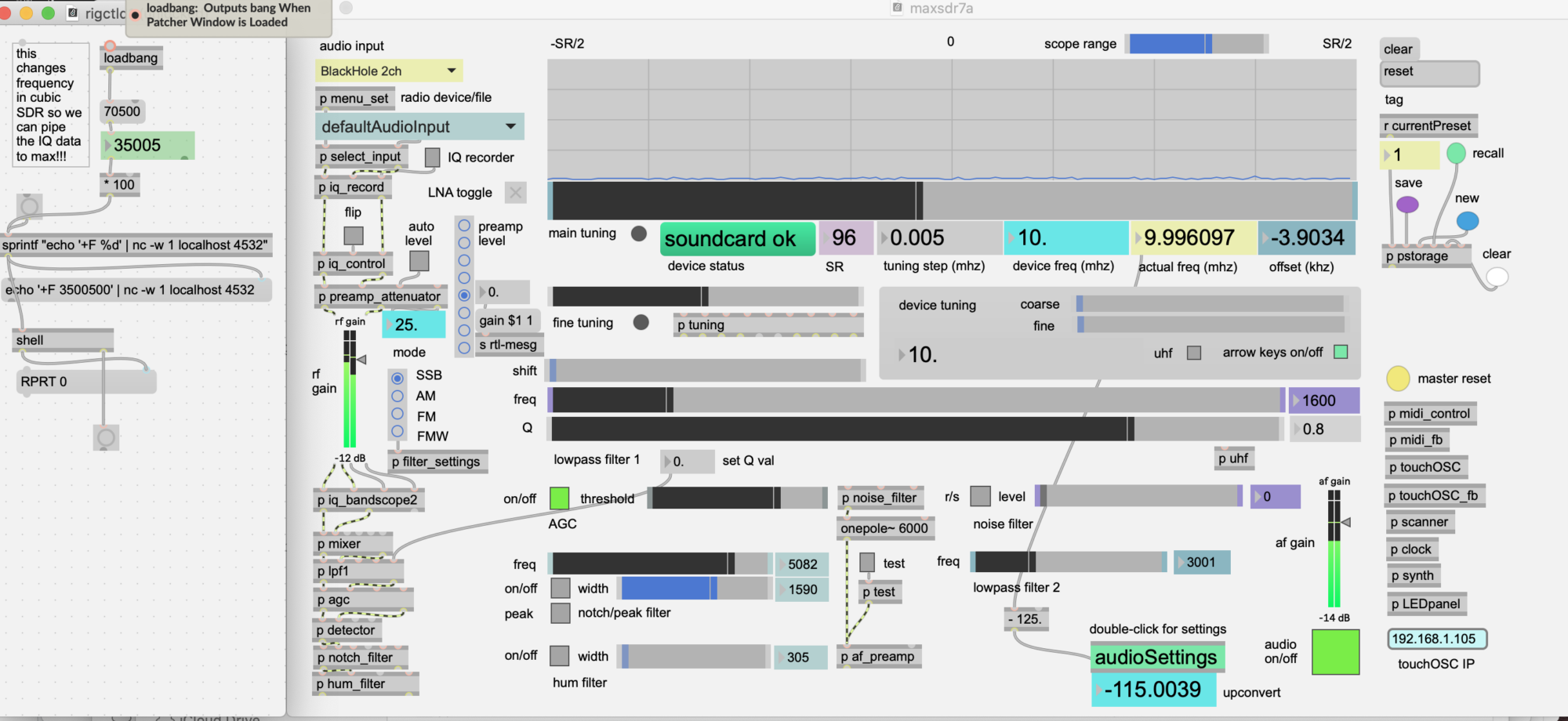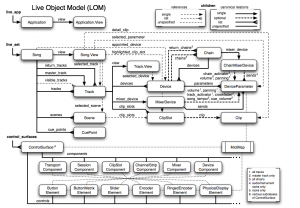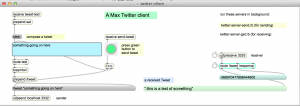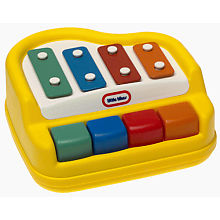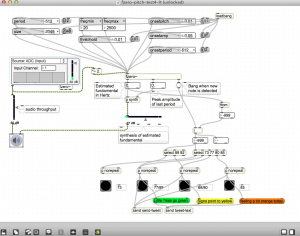Sound design tools.
Max for Live object Model
Programming Max For Live devices
By Cycling 74
HIghlights
- overview/intro
- * a way to show how many midi notes are being played, using [borax] and build a list of them using [bag]
- how to sync a [phasor~] signal to the Live transport (1 bar)
- transport controlled velocity step sequencer.
- making a midi instrument
- ADSR control of midi instrument
- * filterning with sync to get dubstep bass
- working with buffer~ and samples, and drop
- * [poly~] polyphonic synth : http://cycling74.com/download/polysynthset.zip
- * live API and remote (to control external devices) and live.step, with [phasor~] control
- * parameter sequencer
Git “Command Not Found” Error In Mountain Lion
Max Twitter client using ruby
Send and receive Tweets using Max via OSC to a background ruby server.
An advantage of this method is that both the patch and the server are compact and easy to understand. The Max patch does things in a Max way. And likewise with the ruby scripts.
download
https://github.com/tkzic/internet-sensors
folder: twitter-ruby
files
Max
- twitter-client.maxpat
ruby
- twitter-server-send.rb (for sending Tweets)
- twitter-server-get.rb (for receiving Tweets)
ruby gems
The ruby script requires installation of the following gems
- json
- osc-ruby
For example:
# sudo gem install twitter
Twitter authorization
In addition to having a Twitter account, you will need to set up a Twitter application from the developer site here:
Good instructions on how to do this can be found in this stackoverflow.com post under this heading: So you want to use the Twitter v1.1 API?
When you get to step 5 – in the instructions – instead of writing your own code, just use a text editor to copy your access tokens into these ruby programs:
- twitter-server-send.rb
- twitter-server-get.rb
Replace the strings in this line of code by copying and pasting the appropriate ones from your Twitter application:
twitterClient = Twitter::REST::Client.new do |config| config.consumer_key = "mqQtoYh16343tDFG3BK7QQ" config.consumer_secret = "X0KexjlK49fhhrnn9EztapZfATCQqWCc5fXVJH2pE" config.oauth_token = "205589709-5krgh9FR3KkLGRDnewiU7GKKBMA6i2La84c" config.oauth_token_secret = "LNARAeooN2vkklkF006GRdihQ5D8YYkm8dYvEs68M" end
instructions
(note: currently running with ruby version 2.0) Display your ruby version by typing: ruby –version
Sending Tweets
- Open the Max patch: twitter-client.maxpat
- In a terminal window run the ruby script:
# ./twitter-server-send.rb
- In the Max patch, type in a Tweet. Press the green button to send.
- When you have tweeted enough, end the ruby server program by typing <ctrl-c>
Receiving Tweets
- Open the Max patch: twitter-client.maxpat
- In a terminal window run the ruby script:
- From Twitter, send a Tweet to the user name embedded in the server
# ./twitter-server-get.rb
Both ruby servers can run at the same time.
What’s next?
- Parse incoming Tweets into various components
- Combine the 2 Ruby servers
revision history
- 5/21/2014 – refactored app names. Added receive server
- 5/19/2004 – moved to twitter-ruby folder
- 1/18/2014 – minor fixes to ruby server for current ruby version 2.0
- 9/7/2013 – uses oauth to communicate directly to Twitter from ruby
Adam Rokhsar’s Max frame subtraction example
Uses video frame subtraction in jitter to control playback of audio clip.
download
https://github.com/tkzic/max-projects
folder: frame-subtraction
patch: frameSubtraction_example.maxpat
You will also need an audio file: aiff, wav, etc., to load into a Max buffer.
dependencies
You will also need the cv.jit library (computer vision): http://jmpelletier.com/cvjit/
Add the location of these files to your path in Max using Options | File Preferences.
Note: When I loaded the patch in Mac OS 10.8 – the computer automatically downloaded and installed Java updates.
instructions
- Load an audio file for playback
- Try setting minimum summed pixels to 150,000 or less for greater effect – depending on amount of light in the room
Send Tweets with a Little Tikes piano
This project uses the Max fzero~ object to detect which key of the piano gets pressed and send a pre-written Tweet like “Signs point to yellow” based on the color of the key.
It works with the Internet sensors project that sends Tweets from Max using Ruby. https://reactivemusic.net/?p=7013
download
https://github.com/tkzic/internet-sensors
folder: twitter-ruby
instructions
- Follow instructions here to send Tweets using Max and Ruby: https://reactivemusic.net/?p=7013
- At this point you will have a Max patch open and a Ruby server running in a terminal window.
- Now open little-tikes.maxpat
- Carefully play individual tones on the Little Tikes piano.
notes
fzero~ is probably not the best choice for this. It doesn’t work above 2500hz which means it won’t probably distinguish between the lowest and highest key which are an octave apart. In fact the Little-Tikes piano, for a pitched instrument, is difficult to analyze. Due to relatively equal weight of partials to fundamental, and the quick decay. Other choices, would be pitch~ (Jehan) fiddle~ (Pucket…)
I remember seeing an Arduino project where somebody did this in reverse – actually built a motorized striker to play the piano)
… insert link to video here…
Pitch detection and improvisation in Max
The more it hears a pitch, the more plays that pitch.
By Yago De Quay
Chords in our surroundings
Analysis of chords in everyday situations…
By Sarah Soriano
http://sarahlayne.wordpress.com/2008/04/17/chords-in-our-surroundings/
